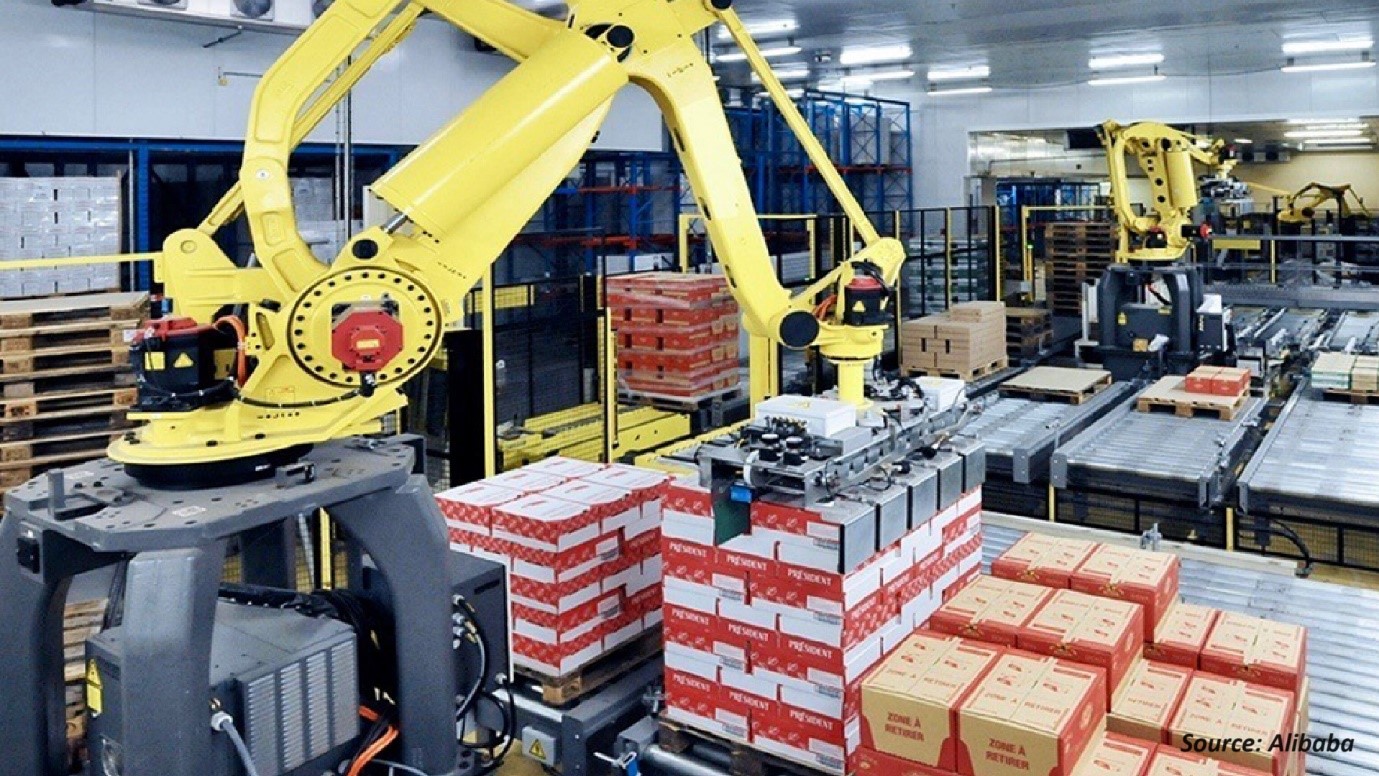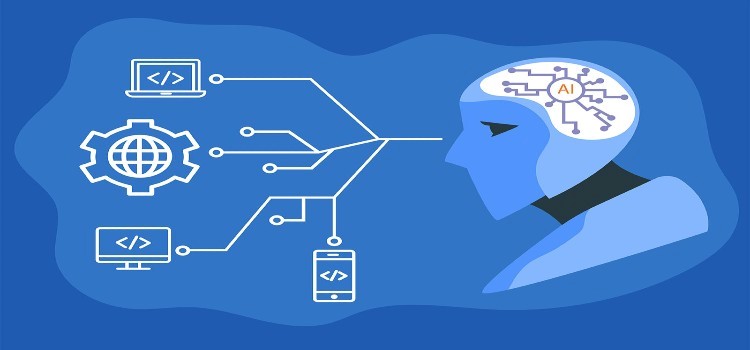
Latin America Robot Software Market by Software Type (Recognition Software, Simulation Software, Predictive Maintenance Software, Communication Management Software, and Data Management And Analysis Software), by Robot Type (Service Robots and Industrial Robots), by Deployment Mode (On-premise and On-demand), by Organization Size (Large Enterprises and Small and Medium-sized Enterprises (SMEs)), and by Industry Vertical (Banking, Financial Services, and Insurance (BFSI), Automotive, Retail and E-Commerce, Aerospace & Defense, Healthcare and Life Sciences, Transportation and Logistics, Manufacturing, Telecommunications and IT, Academia and Research, Media & Entertainment, and Others) – Opportunity Analysis and Industry Forecast, 2024–2030
Industry: ICT & Media | Publish Date: 10-Jul-2024 | No of Pages: 126 | No. of Tables: 92 | No. of Figures: 57 | Format: PDF | Report Code : N/A
Latin America Robot Software Market Overview
The Latin America Robot Software Market size was valued at USD 322.9 million in 2023, and is expected to reach USD 1377.0 million by 2030, with a CAGR of 22.0% from 2024 to 2030. Robot software encompasses a suite of programs and algorithms designed to govern and oversee the activities of robots or robotic systems across various industries such as logistics, manufacturing, entertainment, healthcare, and more. The functionality of robot software entails several essential components.
Primarily, it manages and orchestrates the movements and behaviors of robots, ensuring precise and efficient task execution by issuing detailed commands to robotic components such as motors and actuators. Furthermore, robot software assumes a critical role in interpreting data from diverse sensors embedded within robots. These sensors, ranging from cameras to Light Detection and Ranging (LIDAR) sensors and tactile sensors, furnish indispensable environmental feedback enabling robots to perceive and comprehend their surroundings.
An integral aspect of robot software lies in its capacity to make intelligent decisions leveraging artificial intelligence (AI) and machine learning (ML) algorithms. Through data analysis from sensors, adherence to preset rules, or learning from past encounters, robots can adapt to evolving circumstances. This intelligence empowers them to operate autonomously, making instantaneous decisions and adjusting their behaviors accordingly. Additionally, robot software facilitates intercommunication and networking among robots, fostering collaboration for intricate tasks or data exchange with a central control system. Within industrial environments, this interconnectedness enables synchronized operations, culminating in enhanced efficiency and productivity.
Increasing Adoption of Industrial Robots Propels the Latin America Robot Software Market Growth
The increasing adoption of industrial robots is a significant driver propelling the growth of the Latin America robot software market. As industries across various sectors increasingly integrate automation into their processes, the demand for efficient robot software solutions rises in tandem.
Industrial robots are being deployed for a wide range of tasks, from manufacturing and assembly to logistics and warehousing. To maximize the capabilities of these robots and ensure seamless integration into existing workflows, sophisticated software solutions are required.
These software offerings enable programming, control, optimization, and coordination of robotic systems, enhancing their performance and productivity. Consequently, the rising adoption of industrial robots fuels the demand for advanced robot software, driving growth in the Latin America robot software market.
Increasing Investments in Research and Development (R&D) Drive the Growth of the Latin America Robot Software Market Trends
Increasing investments in research and development (R&D) play a pivotal role in driving the growth of the Latin America robot software market demand. As organizations and governments allocate more resources to R&D initiatives, there's a heightened focus on advancing robotics and automation technologies, including robot software.
These investments spur innovation, leading to the development of more sophisticated and capable robot software solutions. R&D efforts contribute to enhancing functionalities such as AI integration, machine learning algorithms, and advanced control systems, enabling robots to perform complex tasks with greater efficiency and autonomy.
Moreover, R&D investments fuel the exploration of new applications and use cases for robot software across diverse industries, expanding the market's potential. By fostering technological advancements and addressing emerging challenges, increased R&D investments stimulate market growth and drive the evolution of the robot software market.
High Initial Investment for Acquiring Robot Hardware Restrain the Growth of the Latin America Market
The high initial investment required for acquiring robot hardware serves as a significant restraint on the growth of the Latin America robot software market. Acquiring robot hardware involves substantial upfront costs, including the purchase of robotic systems, peripherals, and associated equipment.
These costs can be prohibitive for many organizations, particularly small and medium-sized enterprises (SMEs) or those operating on tight budgets. The significant financial outlay required for robot hardware may deter potential adopters from investing in robot software solutions, despite their potential long-term benefits.
Additionally, the high initial investment can extend the return on investment (ROI) period, leading to longer payback periods and limiting the scalability of robot deployments. As a result, addressing the challenge of high initial investment costs for robot hardware is crucial to unlocking broader adoption and driving growth in the Latin America robot software market.
Development of Digital Twins and Simulation Software Creates New Opportunities in the Latin America Robot Software Market
The development of digital twins and simulation software creates new opportunities in the market by offering advanced tools for modeling, testing, and optimizing robotic systems in the country. Digital twins provide virtual replicas of physical robots and their environments, enabling real-time monitoring, analysis, and predictive maintenance.
Simulation software allows users to simulate various scenarios and environments, validating robot software algorithms and optimizing performance before deployment. These technologies offer significant advantages, including reduced development time and costs, enhanced scalability, and improved risk management.
Additionally, digital twins and simulation software facilitate collaborative development and training, enabling stakeholders to iterate and refine robot software solutions more effectively. By providing powerful tools for design, testing, and optimization, the development of digital twins and simulation software drives innovation and accelerates the adoption of robot software in diverse industries.
Competitive Landscape
Several key players operating in the Latin America robot software industry include IBM, NVIDIA, ABB Ltd., FANUC, Teradyne, Inc., H2O.ai, Brain Corp, CloudMinds, Clearpath Robotics, and Neurala, Inc. These market players are adopting strategies to maintain their dominance in the market.
Latin America Robot Software Market Key Segments
By Software Type
-
Recognition Software
-
Simulation Software
-
Predictive Maintenance Software
-
Communication Management Software
-
Data Management and Analysis Software
By Robot Type
-
Service Robots
-
Ground
-
Aerial
-
Underwater
-
-
Industrial Robots
-
Traditional Industrial Robots
-
Articulated Robots
-
SCARA Robots
-
Parallel Robots
-
Cartesian Robots
-
Other Robots
-
-
Collaborative Industrial Robots
-
By Deployment Mode
-
On-premise
-
On-demand
By Organization Size
-
Large Enterprises
-
Small and Medium-sized Enterprises (SMEs)
By Industry Vertical
-
Banking, Financial Services, and Insurance (BFSI)
-
Automotive
-
Retail and eCommerce
-
Aerospace & Defense
-
Healthcare and Life Sciences
-
Transportation and Logistics
-
Manufacturing
-
Telecommunications and IT
-
Academia and Research
-
Media & Entertainment
-
Others
REPORT SCOPE AND SEGMENTATION:
|
Parameters |
Details |
|
Market Size in 2023 |
USD 322.9 Million |
|
Revenue Forecast in 2030 |
USD 1377.0 Million |
|
Growth Rate |
CAGR of 22.0% from 2024 to 2030 |
|
Analysis Period |
2023–2030 |
|
Base Year Considered |
2023 |
|
Forecast Period |
2024–2030 |
|
Market Size Estimation |
Million (USD) |
|
Growth Factors |
|
|
Companies Profiled |
10 |
|
Market Share |
Available for 10 companies |
|
Customization Scope |
Free customization (equivalent up to 80 working hours of analysts) after purchase. Addition or alteration to country, regional, and segment scope. |
|
Pricing and Purchase Options |
Avail customized purchase options to meet your exact research needs. |
KEY PLAYERS
-
IBM
-
NVIDIA
-
ABB Ltd.
-
FANUC
-
Teradyne, Inc.
-
H2O.ai
-
Brain Corp
-
CloudMinds
-
Clearpath Robotics
-
Neurala, Inc.




 Speak to Our Analyst
Speak to Our Analyst


































